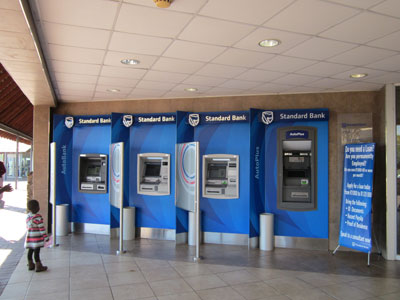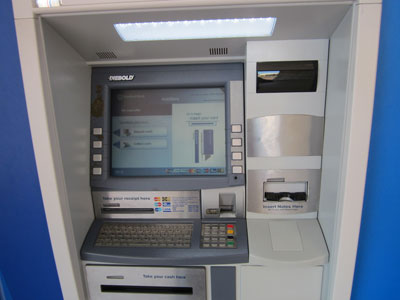Precautions for travelers
This item appears on page 12 of the October 2013 issue.
On a small-group tour of Southern Africa in May ’13 that we booked with Africa 2000 Tours (Knysna, South Africa), a wonderful company and a frequent advertiser in ITN, I learned a few lessons about precautions to take while traveling.
• When I retrieved my checked bag at the Cape Town airport, one of the two main zipper pulls (plastic) was broken. I could not use my TSA lock to secure the two pulls together to lock my suitcase. Gill, our resourceful trip leader, provided me with several plastic zip ties, and I used one to secure the remaining zipper pull to another zipper pull on an outside compartment.
I will now never travel without zip ties, and I’ll be sure to have nail clippers so I can snip them off.
For the flight back to the US, I had my suitcase wrapped in plastic to guard it against pilferage or damage. There were several vendors at the Johannesburg airport who would wrap a suitcase for 40 rand (about $4).
• In South Africa, we discovered that the ATM machines were always located on the outside of the banks. While making withdrawals, we were careful to have someone watch our backs, and we each covered the keypad when entering a PIN.
Partway through the trip, however (when we were no longer being guided by Gill and Graham of Africa 2000), two of us made a quick stop to use an ATM in a shopping center. The rest of the group was waiting and we felt rushed, so instead of using a machine one at a time and watching out for each other, we used adjoining machines.
As I was inserting my card, a young man came up next to me and briefly put his hand on top of mine, saying, “This is the way you insert the card,” then he quickly took his hand away. Thinking he might be trying to palm my card, I watched his hand closely but saw nothing, and I thought the card had indeed gone into the machine. When I entered my PIN, however, instead of the screen showing dots or asterisks as usual, it showed the actual 4-digit number!
I quickly put my hand over the screen and hit the “Cancel” button, but my card did not come out. I then learned that my companion had had similar “help” and her card was also missing.
Our driver then arrived, and the three of us went into the Standard Bank adjoining the ATMs. I will spare you the details, but the staff at the bank was less than helpful. The bank manager and local police also were no help.
I learned that, using the stolen card, a thief will quickly make a small “test” withdrawal to see if it will work, then he may make further withdrawals in amounts of about $200 until he can withdraw no more. (He doesn’t know how much money is in the account.)
In my case, over $1,000 was withdrawn in five fraudulent transactions, and my companion had $600 withdrawn from her account.
But I was lucky. I was not frightened or threatened, my purse was not stolen and I was not hit on the head. It was only money that I lost.
Remember, never rush! Take your time, assess your situation and be alert. My negligence allowed this incident to happen.
Use the buddy system… for everything! Get familiar with each other’s purses, luggage, etc., and watch each other’s backs, literally. The members of our group started doing this and it was actually fun.
Important — use a cash card, such as a Fidelity Cash Management Account card. Put money for trip cash into that account before you leave home, but only deposit a reasonable amount over what you think you will need to withdraw during the trip. That way, only that amount is vulnerable to be stolen, not your entire checking account balance.
Fortunately, in our case, my friend and I both were using cash cards loaded with limited funds and not cards linked to any bank accounts.
• After the theft, I had with me the number of my ATM card and the phone number to call in the US to put a stop on the card immediately if it were lost or stolen, but to make that call I needed a phone with an international line.
Our driver’s phone would make only local calls, and the staff at Standard Bank insisted they did not have a phone that could make an international call. It wasn’t until we reached our hotel that evening that I was able to make the call, and by then the withdrawals had been made.
Also, I was struck with the realization that if I ever had need to use my emergency medical evacuation insurance, that, too, would require an international phone call.
I cannot emphasize enough how important it is to ensure that you (or your trip leader) are carrying a phone capable of making a call to the US in the event of an emergency.
• The next day we returned to the bank to obtain a business card, and only then did we notice that three of the four ATMs appeared to be something other than the usual ATM. Our driver said that they were used by locals without checking accounts who wished to make loan payments and other transactions.
Those machines looked almost identical to the one “normal” ATM but were labeled “AutoBank” rather than “AutoPlus.” Though I tried, I did not find out from the bank why my PIN had been displayed (my friend didn’t notice if hers had been), whether that was normal for that ATM or the machine had been tampered with. (The fraud agent at Fidelity later told me he had never heard of PINs being displayed on an ATM screen.) In any case, in the future, I would not attempt to use one of those ATMs.
Once I was able to report the theft of my card to Fidelity, they launched an investigation and ultimately refunded the stolen funds to me — a happy ending, for me.
In no way do I want to discourage anyone from traveling to South Africa! In fact, so many people we met were wonderful. Just remember to take precautions as you would in many other places.
DIANE STEELE
Davis, CA


